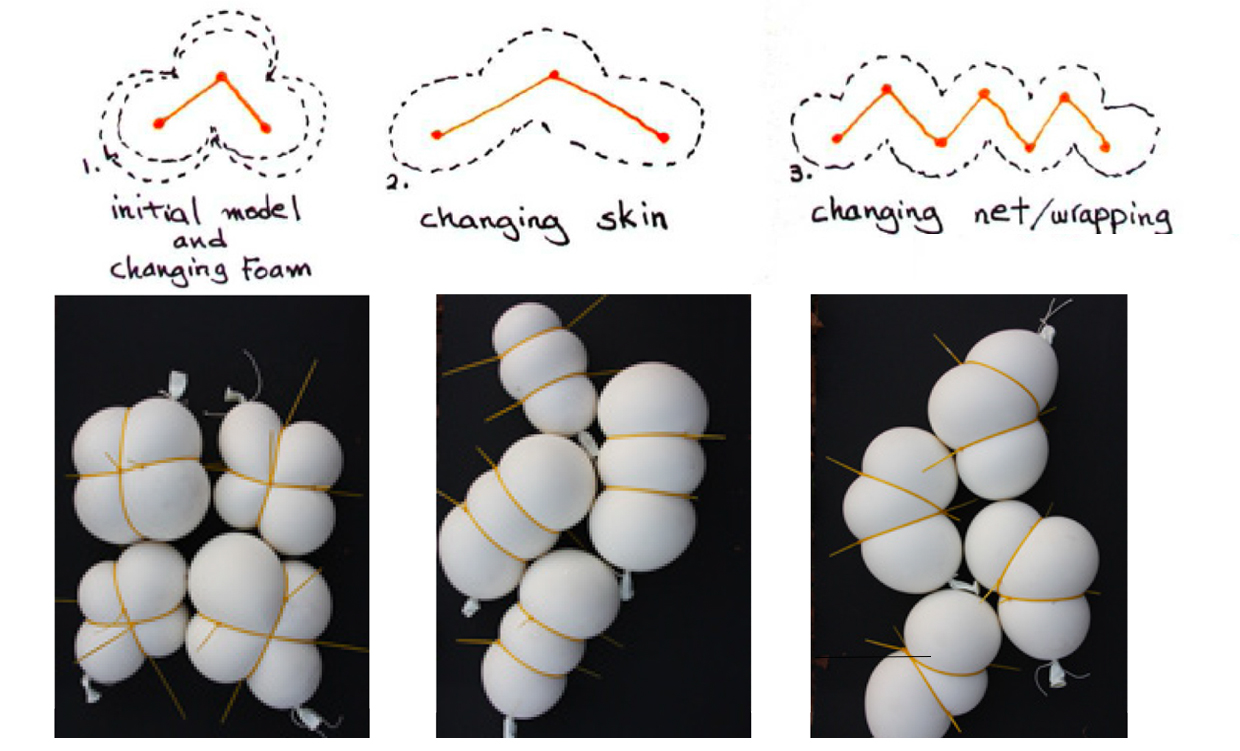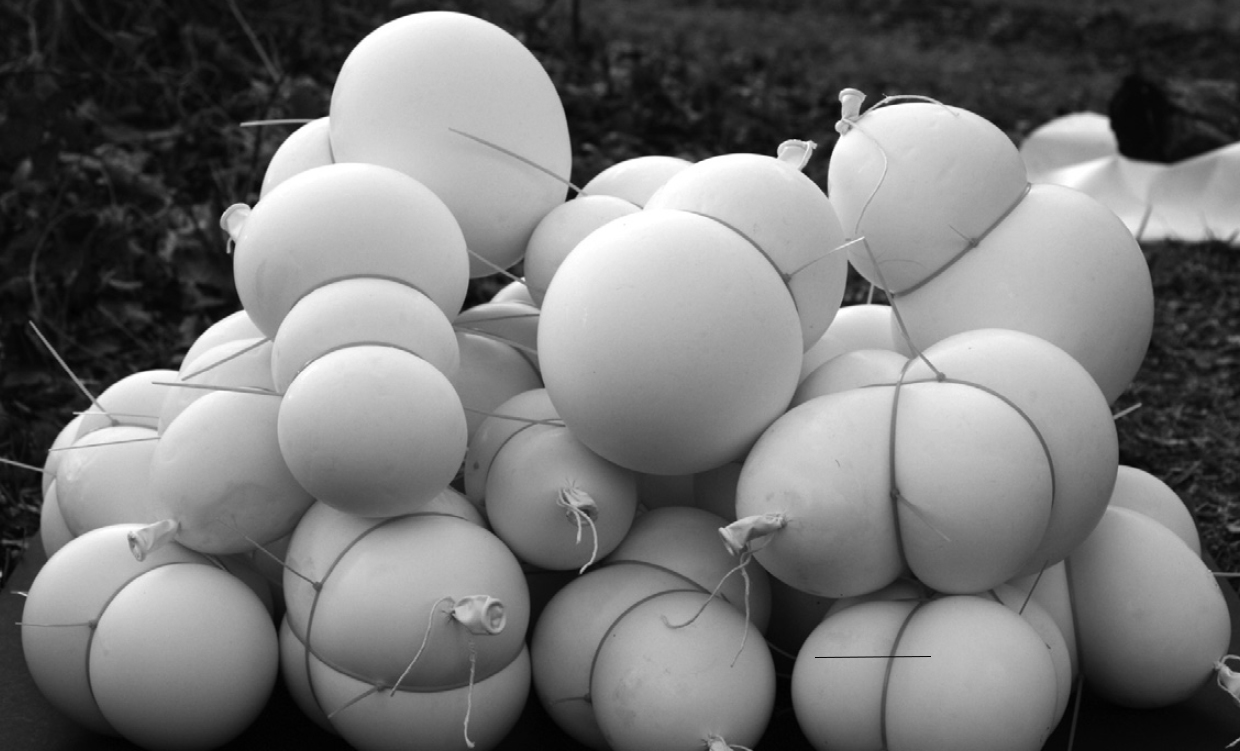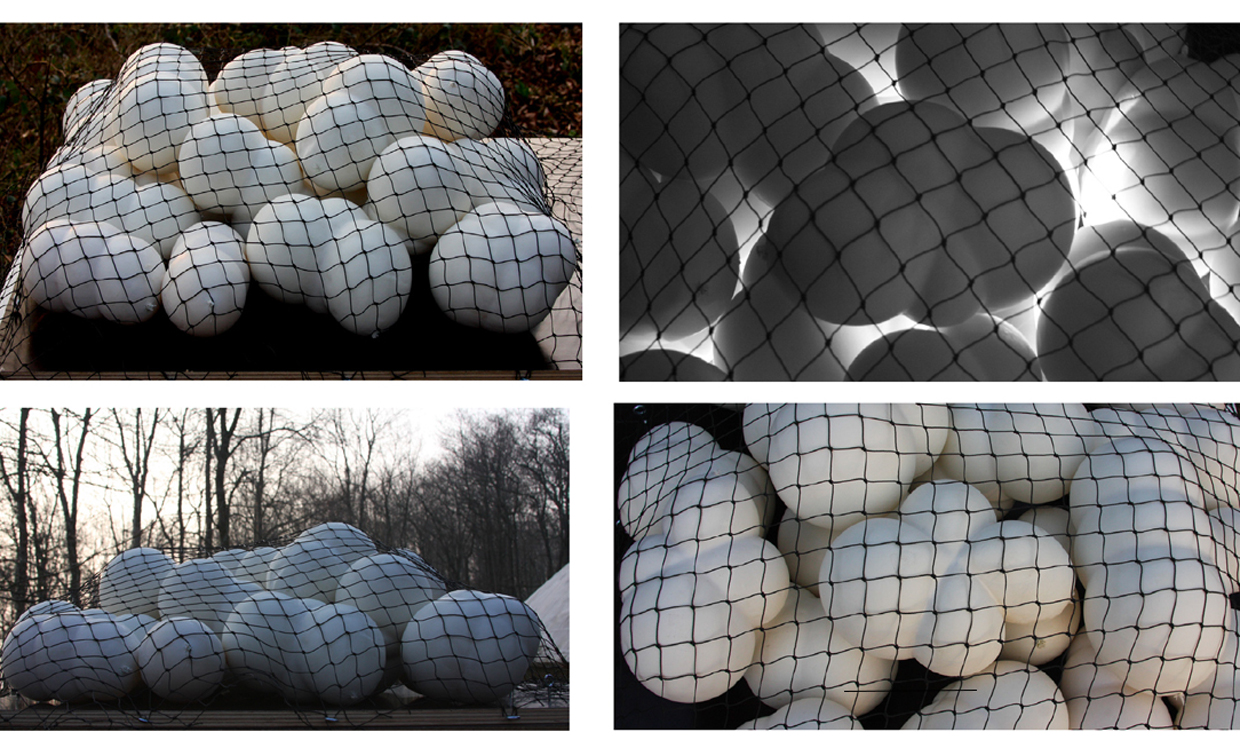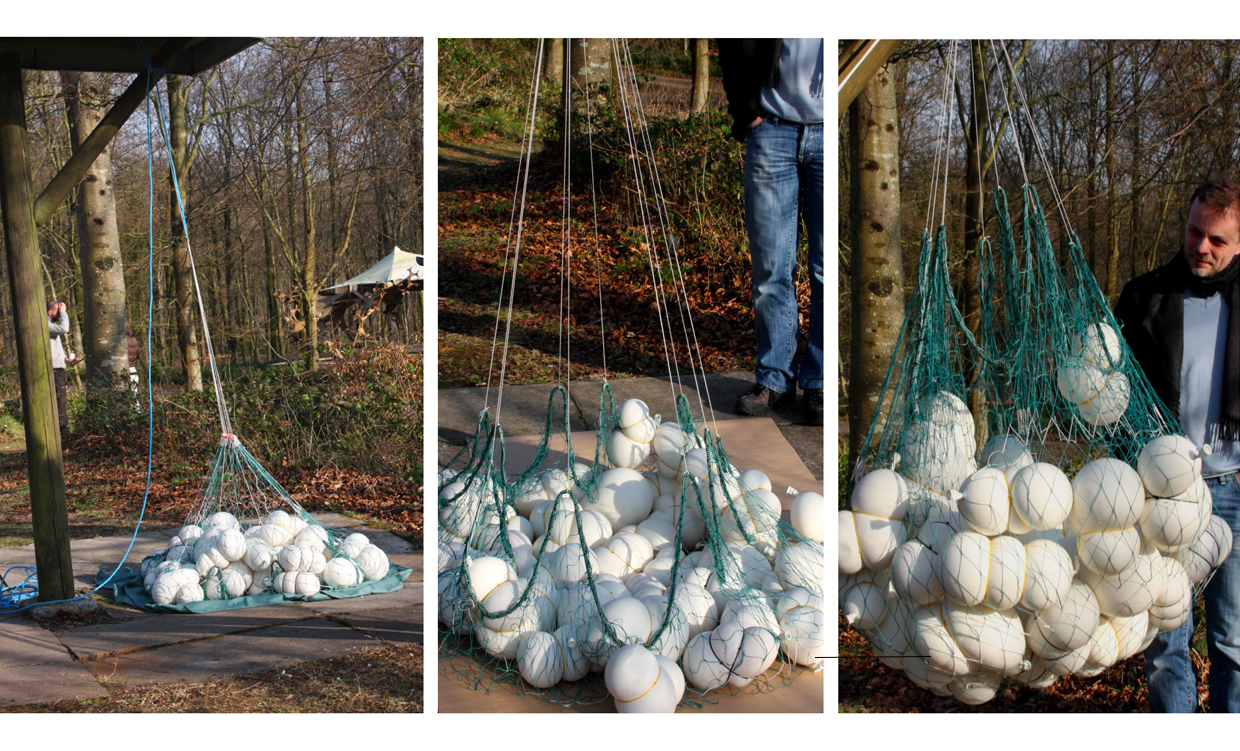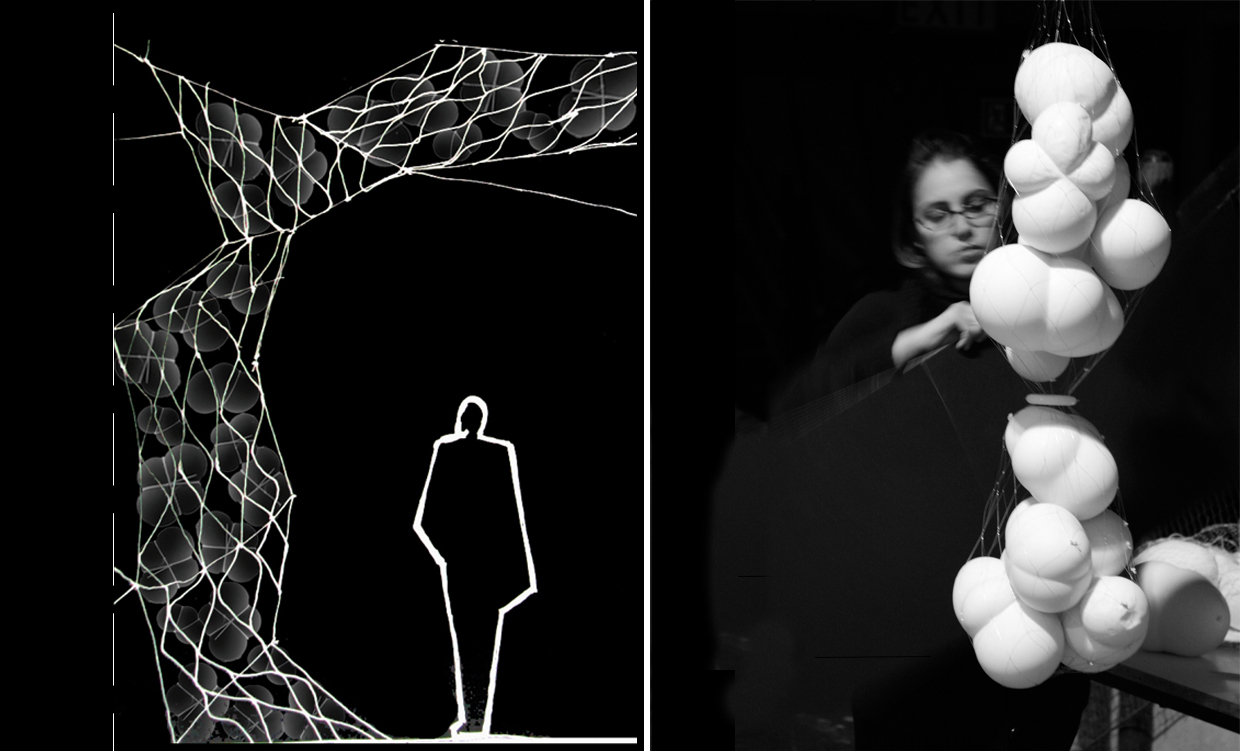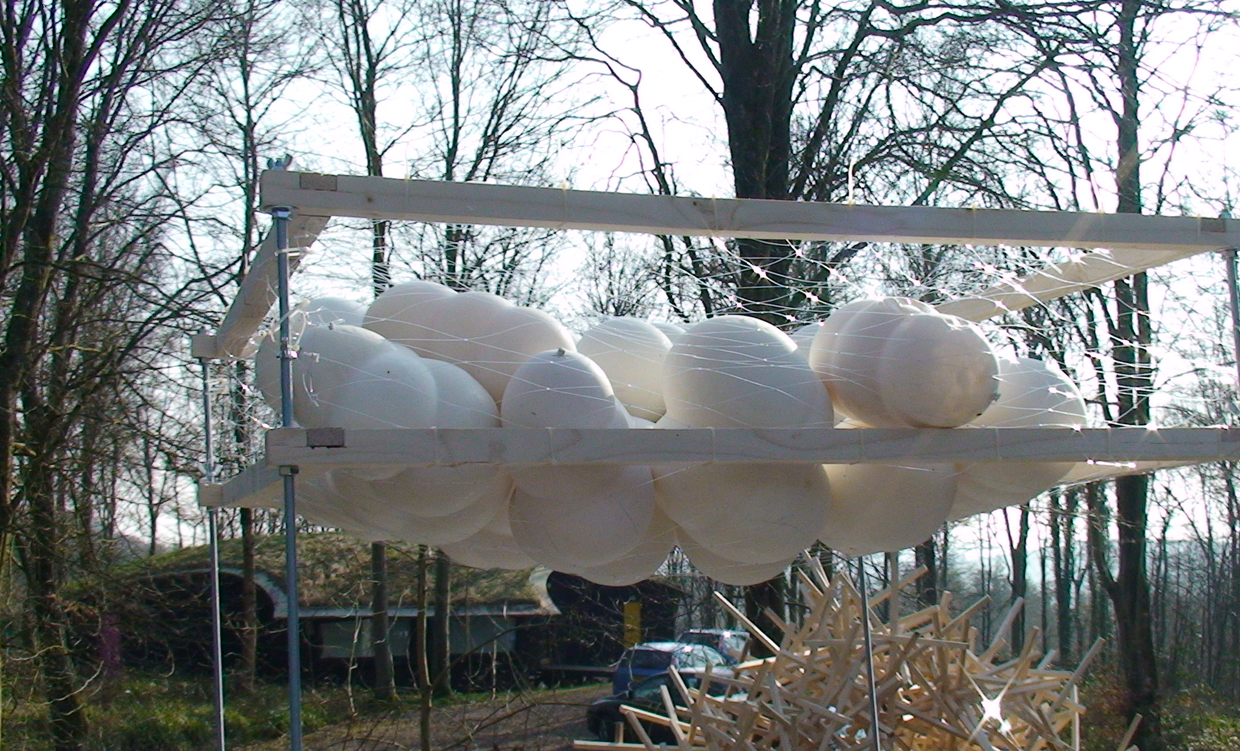The experiments explore the possibilities of form generation through the self-organizational properties of a material system of Solidified Pneumatic structure and Close-packing using Net structure. Pneu is very light bearing structure and to some extent convenient thermal and sound insulation materials. The act of formation in this experiment turns into an exciting subject. In fact the ‘form’ emerges through a form-finding method, which deploys the physical process of self-organization of a material system influenced by extrinsic and intrinsic (chemical reaction) forces.
In the Micro scale level the modules by themselves, their geometrical properties and their formation process stand all issues regarding to the module differentiation in the system.On the other hand in the macro scale the patterns of packing, combination of different types of modules together, and all issues regarding to the accumulation of the modules.By introducing the second layer of the net (fish net) to pack the modules together, it seems that another layer of manipulation would be added to the system, which is regional manipulation of the system. This means that the net could be changed locally and affects some modules around it make some local manipulations as well.
This organization can portraits the Chaos theory behavior. Each arrangement can have an infinite configuration and it is difficult to predict it as well as in the chaos theory small changes in the local circumstance can cause a major transformation in the global behavior.In order to generate the self-organized behavior of such complex system in the digital format it is needed to define an action field and an agent system’s script that controls the relations between individuals but let the whole geometry gets it shape in a self-organized process.To generate these polylines, it is needed to define an action field and an agent system’s script that controls the relations between individuals but let the whole geometry gets it shape in a self-organized process. So modules meet each other and find their resting position gradually.
Tutors: Michael Weinstock, Michael Hensel and Achim Menges.
Team Members: Sara Pezeshk, Zubin Khabazi, Shaktivel Ramaswamy
Location: Hookpark, UK
